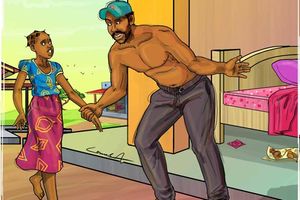Prime
Gulu High School: Celebrating 100 years

The newly-constructed girls’ dormitory at Gulu High School. The dormitory was constructed by Invincible children. Photo by Julius Ocungi
What you need to know:
On October 18, Gulu High School will mark 100 years of academic excellence under the theme, ‘Arise and Shine’. As Julius Ocungi writes, the school, despite living through the several rebellions that ravaged northern Uganda, still maintains academic excellence
Gulu High School, one of the oldest and first secondary schools in northern Uganda, has stood tall for a century amidst the storm of the insurgency that swept through the region.
The school, located in Bardege Division, Gulu Municipality, was built in 1914 by Philips Lees, an evangelist with the Christian Missionary Society (CMS), who had settled in the area in 1913.
Originally started as a junior school, the institution now under the Church of Uganda, aimed at training children in moral life skills and grooming them to be servants of the Lord.
It was later elevated to a mixed O-Level and A-Level boarding school in 1964.
In the 1970s, according to the school records, GHS was ranked among the best 15 schools in the country, admitting students from Acholi, Lango and West Nile sub-regions and beyond.
This was made possible because the school administrators have always been inspirational in the upbringing of students, according to Mr George Ochan ilzoro, an old boy of the school.
“The head teachers were outstanding leaders who inspired students into leadership. Our teachers were real professionals and that is the reason I have achieved what I have to day,” Mr Ilzoro, who was at the school between 1992-1994 said.
He currently heads the Christian Religious Education department.
“This school has played a great role in the upbringing of some of the powerful leaders the country has ever witnessed and it’s with no doubt that it is still one of the schools that lives on legacy,” he says.
Some of the prominent Ugandans who studied at the school are former president Apollo Milton Obote, UPC party president Olara Otunu, Aruu County MP Samuel Odonga Otto, retired bishop of northern Uganda Diocese Nelson Onono Onweng and Prof Ogenga Latigo, the former Agago County MP.

Some of the blind students revise in their library. Photo By Julius Ocungi
Dreadful moments
However, its academic glory was greatly interfered with following several wars and rebel activity in the region.
The Alice Lakwena rebellion, National Resistance Army and the Uganda National Liberation Front (UNLF) in the 1980s all affected the school’s performance greatly.
The situation was made worse by the two-decade Lord’s Resistance Army insurgency that ravaged the region forcing many professional teachers to flee, according to Mzee Odongo Onyango, a former head teacher of the school.
“From all its past good performances, the school began losing its academic credibility since wealthy parents took their children to central region while some of the good teachers moved on to look for opportunities in other schools outside the region,” Onyango, who was headteacher between 1986-2002, told Saturday Monitor adding that the school was in total disrepair at the peak of the LRA insurgency since it lost a greater share of its revenue as a result of students relocating to other schools.
The few who remained never performed well as a result of trauma caused by the attacks of LRA near the school premises.
A new dawn for the school
Even when the guns fell silent in 2006, it was not an easy moment for Gulu High School to regain its academic glory.
A lot had already happened and the majority of the wealthy parents had shunned most schools in the north, preferring to take their children to schools in the central, says David Ocan Kitara, the current head teacher.
Kitara says the school began picking up its pieces in 2010 with support from World Bank, Invisible Children and other development partners who refurbished the infrastructure and furnished the library and laboratories.
The introduction of a quota system to join university also helped many of the students who had gone to the central to come back to the school with hopes of performing well in the region, Kitara says.
“With most of the basics in place today, the school has slowly regained its lost academic glory,” Kitara says.
“The academic performance has been able to attract a number of students in the region and beyond. Currently, there are 1,000 students in both levels,” he adds.
He adds: “All I can say is that despite the period the school was in ruins, it’s a different scene now. We are excelling in academics both O and A Level, sports within the region and above all the discipline we instill in students has helped in changing their lives,” Kitara says.
The school currently ranks second in academic performance in the region. Authorities estimate that 20,000 students have gone through the school since 1986.
Educating the blind
In 1986, the school opened an annex for the blind, to provide education to the visually impaired students in both O and A Level.
It is currently the only institution that provides exclusive education to the visually impaired students in Acholi sub-region.
According to Kitara, 22 visually impaired students are currently pursuing their education at the school.




